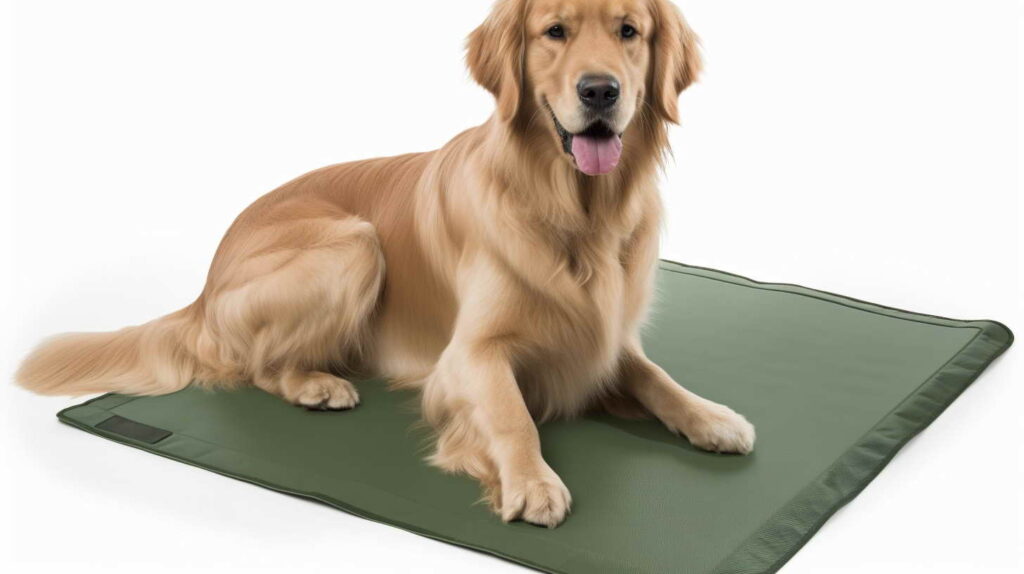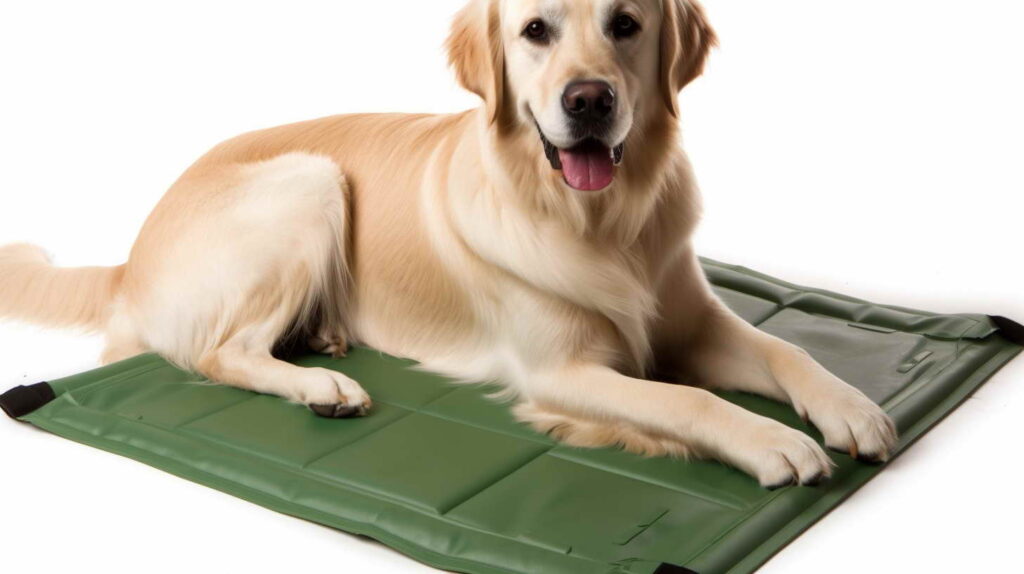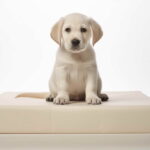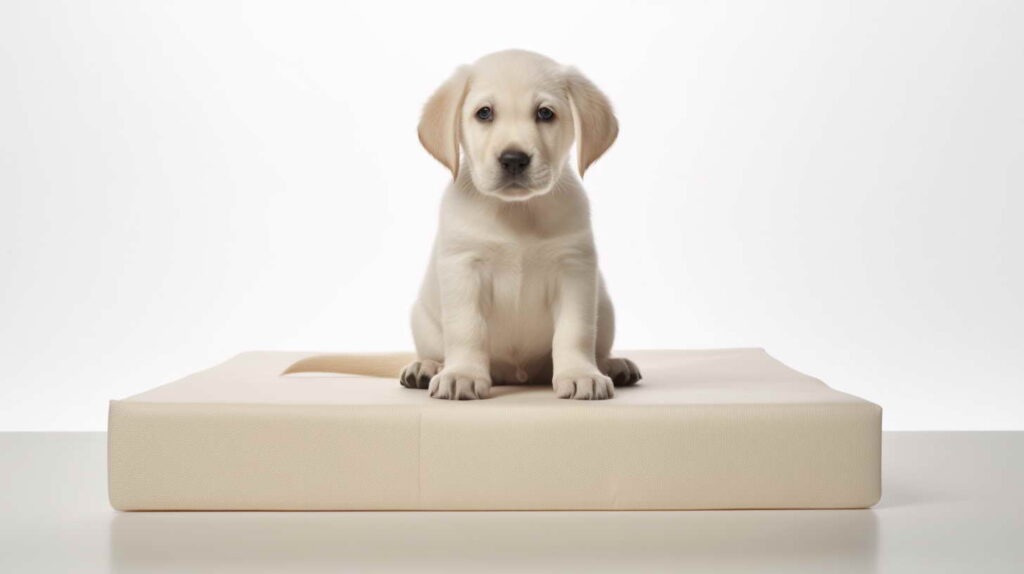The Go-To Guide to Pet Training Pads
PETSIDI – Pet training pads, often referred to as puppy pads or pee pads, have become an essential supply for many pet owners. As useful tools that aid in housebreaking and maintaining hygienic living spaces, pet pads provide effective solutions for avoiding messes and accidents. This definitive guide will explore the ins and outs of pet training pads, from types and proper uses to training techniques and eco-friendly options.

What Are Pet Training Pads?
Pet training pads are designated absorbent pads intended to mimic grass, providing dogs (and cats!) a designated area indoors to relieve themselves. Waterproof on one side and ultra-absorbent on the other, high-quality pads soak up urine and contain messes until they can be properly disposed of.
House training a new puppy or older rescue dog can be daunting. Pet pads give these pets a consistent surface during the process, preventing damage to floors and carpets. They also provide aging or ill pets an accessible potty space and peace of mind for pet owners running long workdays.
The Two Main Categories of Pet Pads
The two primary categories of pet training pads are disposable and washable reusable options. Each has distinct advantages to consider when choosing the right match for your pet.
Disposable Puppy Pads
Disposable pet pads provide maximum absorbency for short-term use. Here are the defining features:
- Ultra-absorbent core: Pulls moisture into the pad instead of the floor
- Plastic waterproof lining: Prevents leakage
- Adhesive strips: Stick and stay put
- Built-in attractant: Encourages potty use
- Odor controlling: Reduces smells with a light scent
- Range of sizes: From small to extra-large
The intended temporary use makes disposables ideal for travel or short-duration training. However, responsible disposable contributes to landfill waste.
Washable and Reusable Training Pads
Reusable cloth pet pads offer a sustainable and affordable option. Key attributes include:
- Absorbent fabric: Draws in moisture, wash after wash
- Waterproof backing: Avoids messes seeping through
- Versatile sizes: Charge size as a pet grows
- Machine washable: Sanitize and reuse
- Eco-friendly: Reduces environmental impact
- Customizable: Place anywhere, blends into home decor
Washable pads provide flexibility and green benefits. Be prepared for extra laundry with daily washing essential for optimal performance.
| Disposable Pads | Reusable Pads |
|---|---|
| Great for travel or short-term use | Eco-friendly & sustainable |
| Ultra-absorbent | Fully customizable sizing |
| Adhesive backing stays in place | Absorbent fabric, wash & reuse |
| Built-in attractants | Waterproof backing |
| Odor controlling | Affordable long-term |
| Wide range of sizes | Machine washable |
Odor Control and Antibacterial Options
In the quest for puppy pads that get the job done without the mess, odor control and antibacterial features are useful additions.
Odor-controlling pads contain fragrances or neutralizing baking soda to diminish unpleasant smells. This allows pads to be discretely changed without drawing attention to their purpose.
Antibacterial pads take cleanliness up a notch. By inhibiting bacterial growth, they guard against germs, stains, and contaminants that can lead to lingering scents. This helps maintain a sanitary potty area and a fresh home environment.
For pet owners struggling with a less-than-accurate pup or perplexing odors, these specialty pads present viable solutions. Be aware that dogs can have adverse reactions to overpowering scents, so moderate and gentle odor control is best.

Choosing the Perfect Puppy Pads
Several factors determine ideal pet training pads for each dog and household. Tailor selection to your pet’s needs with these key considerations.
Size Matters
Pet pads range from small 17 x 24 inch pads up to large 32 x 36 inch options. Measure current accident zones and anticipate future needs when choosing dimensions. Here are common uses for different sizes:
- Small: Toy-breed puppies or cats
- Medium: Growing puppies under 25lbs
- Large: Big breed dogs over 25lbs
- X-Large: Multiple pets used at once
Ideally, the pad width should extend three inches beyond your pet’s body on each side when in a potty position. This gives a sizeable surface area for fewer misses.
Super Absorbent is the Best
The whole point of indoor pet pads is to fully absorb and contain liquids without overflow. Highly absorbent pads with quick dry times are essential for avoiding messes. Target ones holding over 30 ml of fluid per square inch.
Adhesive vs. Non-Adhesive
- Adhesive backing: Holds pad firmly in place for fewer accidents next to pad. Best for hard, non-porous flooring.
- Non-adhesive: Easier to reposition as needed. Ideal for placing on carpets or training crates.

House Training Puppies with Pads
Implementing a strategic house training regimen sets the foundation for establishing good potty habits. Follow these training tips when bringing pads into the equation:
Establishing a Routine
Dogs thrive on consistency. Set up pads in an accessible area and gently lead the puppy to them using the same “Go potty” phrase during regular intervals after meals and naps. Keep supervision handy to celebrate successes!
Positive Reinforcement
As the puppy uses the designated pad area, enthusiastically praise and offer treats to reinforce that this is an approved potty zone. Avoid scolding accidents and interrupt misplaced attempts by redirecting promptly to the pads.
Troubleshooting Tricky Obstacles
Patience and persistence are vital when facing hurdles. If accidents arise away from pads:
- Restrict access to problem areas completely
- Reevaluate pad placement suitability
- Switch pads brand if preferences arise
- Bring soiled pads outside for retraining
- Increase supervision and access limitation
Hang in there! Consistency and positive association are key to overcoming challenges.
Environmental Responsibility
All pet supplies come with some ecological footprint. Here’s how to make green-conscious choices when selecting disposable or reusable pads:
Disposable Pad Considerations
- Seek biodegradable pad materials when available
- Opt for pads without dyes, perfumes, or deodorants
- Dispose of used pads responsibly tied in trash bags
- Reduce overall disposable pad usage
Eco-Friendly Reusable Alternatives
- Choose reusable fabric-based washable pads
- Source organic, earth-friendly fabric materials
- Wash in cold water to reduce energy expenditure
- Line dry pads instead of machine-drying
- Donate old pads when no longer needed
With some informed adjustments, pet pads can be an environmentally gentle way to maintain both house training and household cleanliness.
Debunking Myths and Misconceptions
Let’s clear up some common misguiding myths about pet training pads so owners can leverage their benefits appropriately:
Myth: Pads Encourage Laziness in Dogs Some believe pads allow dogs to get away with inappropriate indoor accidents rather than learning to wait to go outside. However, when used strategically alongside positive reinforcement training, pads set dogs up for success by providing an acceptable potty outlet.
Myth: Pads Are Only for Indoor or Temporary Use It’s a common assumption pads are just an indoor shortcut that enables pet messes. However, they serve multi-faceted long-term purposes, providing aging or physically limited pets an accessible way to handle business even primarily outdoor dogs.
Real Owners Share Triumphant Pad Tales
Still unsure about introducing pet pads into your home? Take inspiration from these real owners about how pads were total game-changers for their pups!
Sarah K. shares about their senior Dachshund, Fritz:
“We started using pads when Fritz turned 11 and began having mobility issues. The pads have been amazing for keeping carpets protected when Fritz can’t hold it til we go outside. He took to them instantly, almost like he understood it was made for him go there. Such a life saver!”
James R. training a rescued Australian Shepard, Ruby, says:
“I was pretty skeptical about the pads at first, thinking Rubes should learn to wait before going out. But my trainer recommended them to instill good habits right away. Ruby happily took to pottying on the pads, and it translated easily outside too. Couldn’t have asked for an easier transition!”
The proof is that the pee-pads undoubtedly pull their weight for potty training and maintaining life with pets!
In Summary…
Pet training pads undoubtedly ease the inevitable learning curve of perfecting house training for new puppies and rescued dogs. Meanwhile, they enable aging and physically compromised pets to maintain dignity and quality of life as abilities change.
Disposable pads excel at absorbing messes for travel or short-term use. Reusable cloth pads deliver an eco-friendly, customizable permanent option. With strategic placement, consistent reinforcement, and optimal sizing suited to breed and age, pads check all the boxes for both pup and owner.
As a pet owner, continue growing your know-how on modern positive training methods. Be open-minded to tools that make the journey easier for all. Most importantly, commit fully to the faithful companion by your side through the peaks and pits of pet parenthood. Pads or not, soak up all the joy (and yes, challenges too) your four-legged friend has to offer!



Leave a Reply